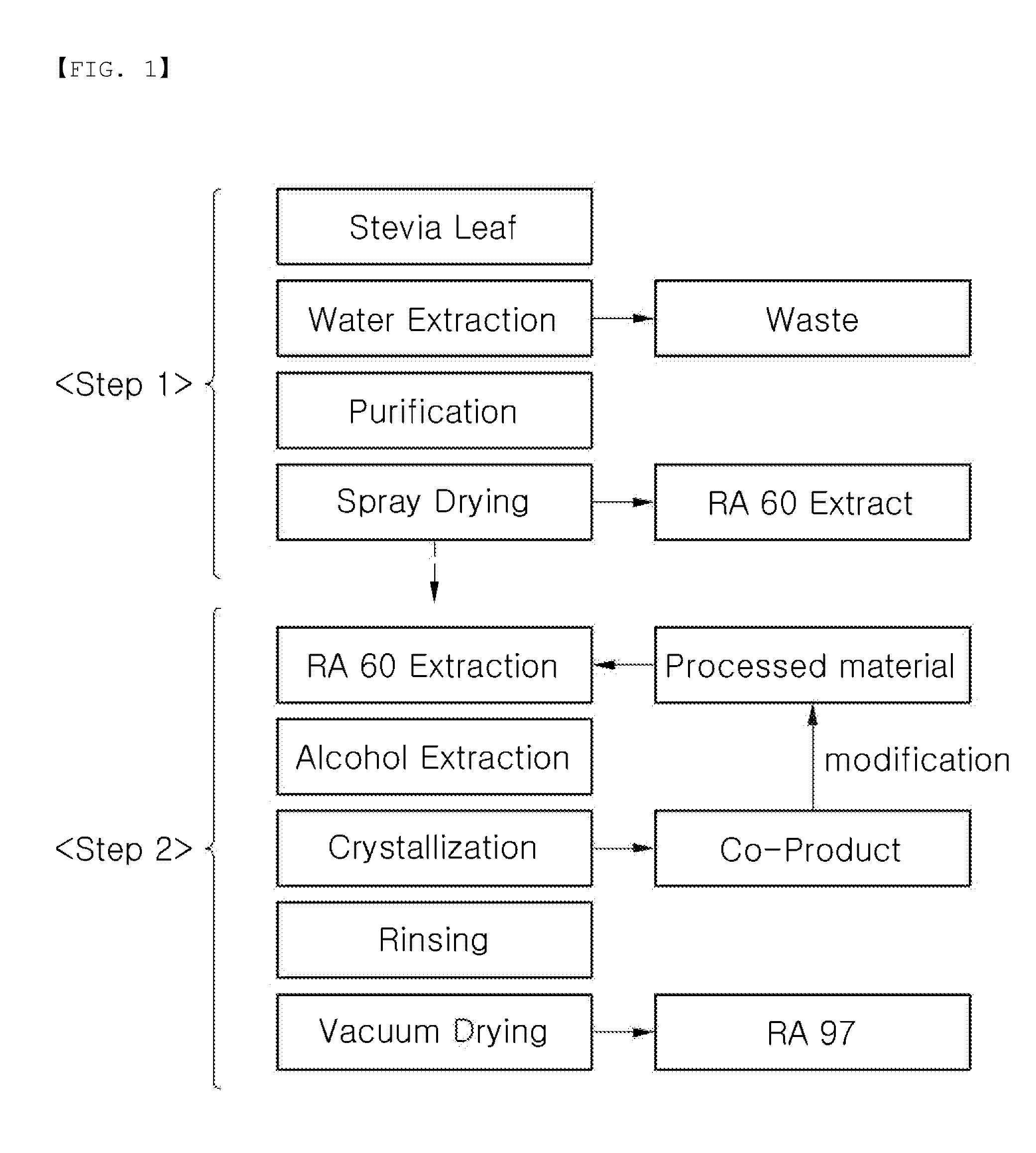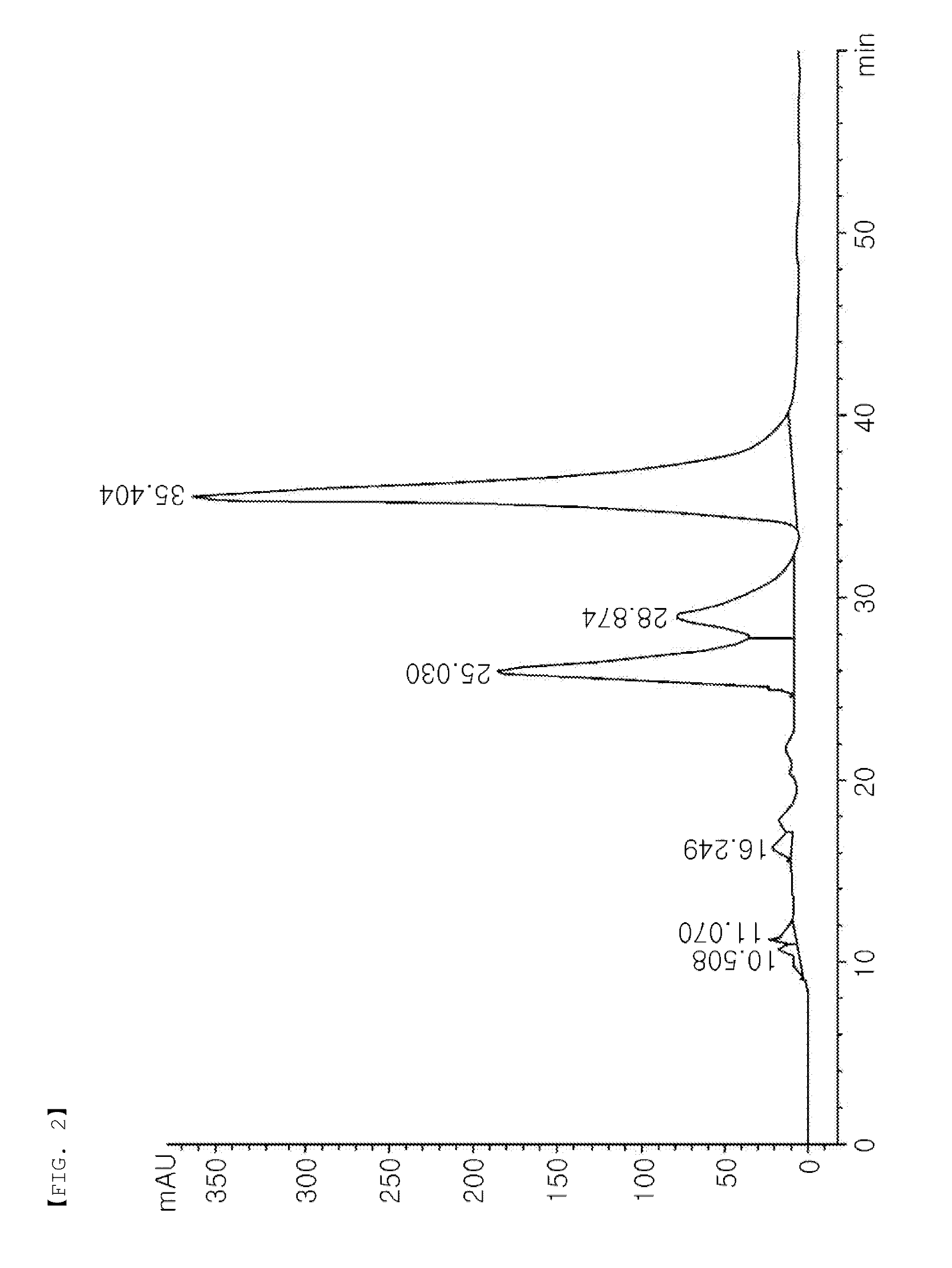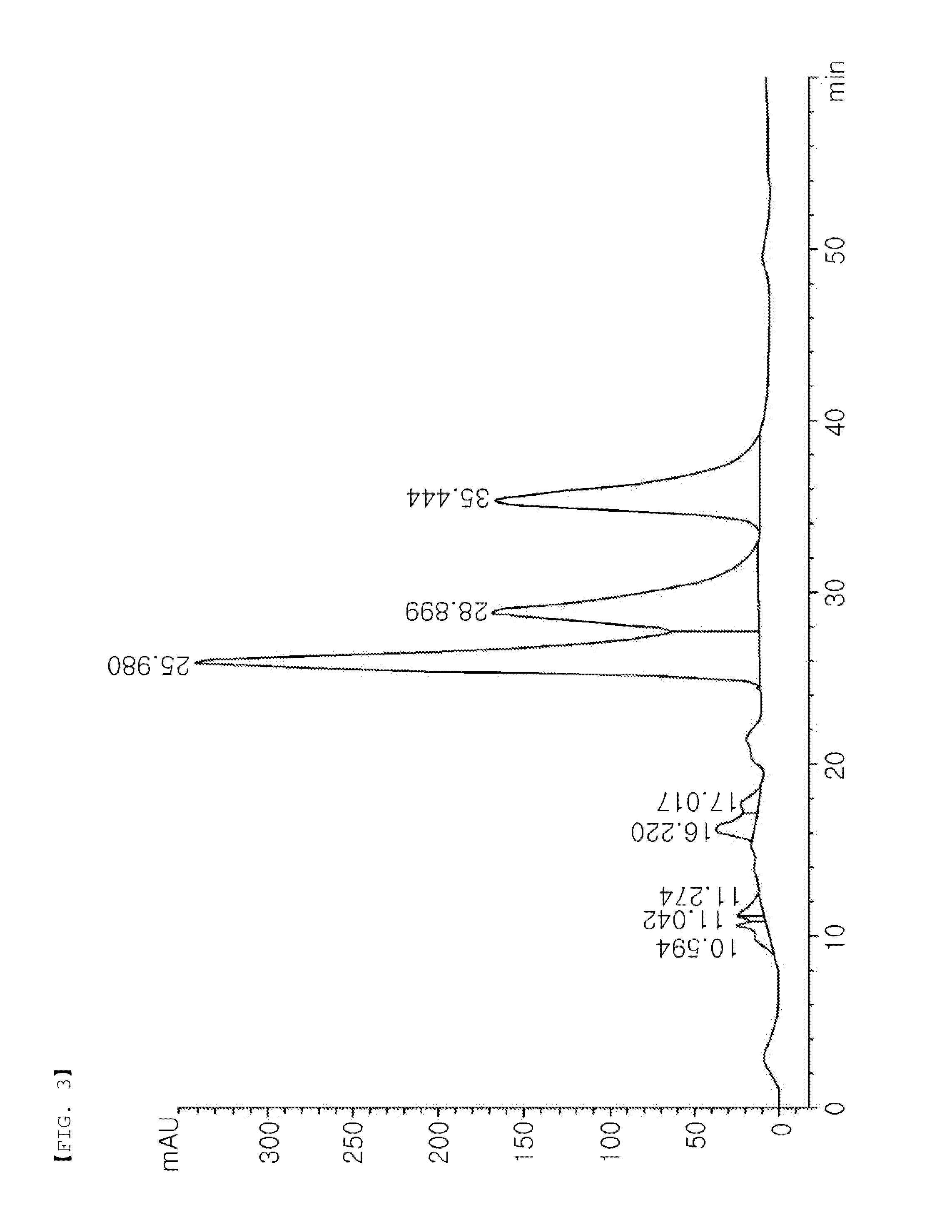Method of manufacturing rebaudioside a in high yield by recycling by-products produced from manufacturing process for rebaudioside a
- Summary
- Abstract
- Description
- Claims
- Application Information
AI Technical Summary
Benefits of technology
Problems solved by technology
Method used
Image
Examples
example 1
[0039]Content and ash content analysis of steviol glycoside in conventional RA 60 product, and in residual by-products produced from a conventional Rebaudioside A, in particular, residual by-products as a mother liquor produced from a fractional crystallization process
[0040]HPLC analysis was performed to identify a content of steviol glycoside. To do this, 1 g of each of the samples and 1000 ml of distilled water were loaded into a 1000 ml mass cylinder and uniformly mixed, and then filtered through a 0.45 μm aqueous filter. HPLC (Agilent 1200 Series) device was used and 20 μl of each of the samples was loaded thereto. Analysis conditions were set to be a flow rate of 0.5 ml / min and a wavelength of 210 nm. As shown in FIGS. 2 and 3, contents of stevioside, Rebaudioside A, and Rebaudioside C were measured.
[0041]As analysis results, the conventional RA60 product included 23.3% of stevioside, 61.4% of Rebaudioside A, and 12.7% of Rebaudioside C, and the by-products included 42.6% of st...
example 2
Purification of By-Products
[0043]In order to process residual by-products produced following the conventional RA60 product being manufactured, that is, by-products as a mother liquor produced from crystallization to have a reusable level, a content pattern of steviol glycoside in the by-products that had been decolorized and purified was analyzed in the same manner as in example 1 to identify contents of stevioside, Rebaudioside A, and Rebaudioside C.
[0044]After the by-products were purified, ash contents of stevioside, Rebaudioside A, and Rebaudioside C from each of processes were analyzed.
example 3
Enzyme Transferring Process
[0045]By-products as a mother liquor produced from a fractional crystallization process were processed to have a reusable level as in example 2, and stevioside in the by-products was used as an acceptor and reacted in the presence of a β-1,3-glucosyl transferase, β-1,3-glucosyl oligosaccharide compound and a β-1,3-glucanase for breaking down β-1,3 glucose contained in the β-1,3-glucosyl oligosaccharide compound at a temperature of 50° C. for 5 hours, thereby producing Rebaudioside A.
[0046]A content pattern of the newly formed steviol glycoside was analyzed in the same manner as in example 1 to identify contents of stevioside, Rebaudioside A, and Rebaudioside C.
[0047]As apparent from the above description, according to the method according to the exemplary embodiments, by-products that are produced when extracted Rebaudioside A (RA) is purified and crystallized, that is, residual by-products are recycled as a raw material to increase a production yield, the...
PUM
| Property | Measurement | Unit |
|---|---|---|
| Temperature | aaaaa | aaaaa |
| Time | aaaaa | aaaaa |
| Purity | aaaaa | aaaaa |
Abstract
Description
Claims
Application Information
 Login to View More
Login to View More - R&D
- Intellectual Property
- Life Sciences
- Materials
- Tech Scout
- Unparalleled Data Quality
- Higher Quality Content
- 60% Fewer Hallucinations
Browse by: Latest US Patents, China's latest patents, Technical Efficacy Thesaurus, Application Domain, Technology Topic, Popular Technical Reports.
© 2025 PatSnap. All rights reserved.Legal|Privacy policy|Modern Slavery Act Transparency Statement|Sitemap|About US| Contact US: help@patsnap.com



